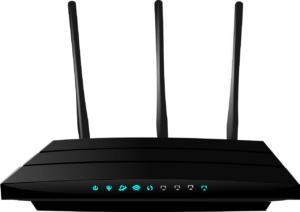
Unleashing the Power of Wi-Fi 6: A Comprehensive Introduction and Benefits
Introduction:
In today’s interconnected world, Wi-Fi has become an essential technology that enables seamless wireless connectivity for a wide range of devices, from smartphones and laptops to smart home devices and IoT devices. The evolution of Wi-Fi standards has brought significant improvements in terms of speed, capacity, and reliability. One of the latest advancements in this field is Wi-Fi 6, the sixth generation of Wi-Fi technology. This article aims to provide a comprehensive introduction to Wi-Fi and highlight the key differences and benefits of Wi-Fi 6 compared to its previous versions.

Understanding Wi-Fi:
Wi-Fi, short for “Wireless Fidelity,” is a wireless networking technology that allows devices to connect to the internet or communicate with each other without the need for physical cables. Wi-Fi operates on radio frequencies, enabling data transmission through the airwaves. It has revolutionized the way we access information, communicate, and interact with digital services.
Previous Wi-Fi Versions:
Over the years, Wi-Fi technology has evolved with the introduction of various standards, each offering improvements in terms of speed, range, and reliability. The previous Wi-Fi versions include:
1. Wi-Fi 1 (802.11b): This was the first commercially available Wi-Fi standard, offering data rates of up to 11 Mbps. It operated in the 2.4 GHz frequency band and provided limited range.
2. Wi-Fi 2 (802.11a/g): Wi-Fi 2 improved upon the previous version by offering higher data rates up to 54 Mbps. It introduced the 5 GHz frequency band, providing better performance and reducing interference.
3. Wi-Fi 3 (802.11n): Wi-Fi 3 brought significant enhancements in speed and range. It supported multiple-input and multiple-output (MIMO) technology, enabling better data throughput and improved reliability.Wi-Fi 3 devices operated in both the 2.4 GHz and 5 GHz bands.
4. Wi-Fi 4 (802.11ac): Wi-Fi 4 was a major leap forward, introducing higher speeds and increased capacity. It operated exclusively in the 5 GHz frequency band and offered data rates of up to several gigabits per second (Gbps). Wi-Fi 4 devices supported beamforming technology for better coverage and reduced interference.
Introducing Wi-Fi 6:
Wi-Fi 6, also known as 802.11ax, is the latest generation of Wi-Fi technology, designed to address the growing demands of modern wireless networks. It brings several key improvements that make it worth considering for businesses and consumers alike.
1.Increased Speed and Capacity:
Wi-Fi 6 offers significantly higher data rates, reaching up to 10 Gbps. This increased speed allows for faster downloads, smoother streaming, and improved overall network performance. Furthermore, Wi-Fi 6 incorporates multi-user multiple-input multiple-output (MU-MIMO) technology, enabling simultaneous data transmission to multiple devices, thereby increasing network capacity and reducing latency.
2. Enhanced Efficiency:
One of the notable features of Wi-Fi 6 is Orthogonal Frequency Division Multiple Access (OFDMA), which enables more efficient utilization of available bandwidth. With OFDMA, Wi-Fi 6 divides each channel into smaller sub-channels, allowing multiple devices to transmit data simultaneously. This technology improves network efficiency, especially in environments with multiple connected devices, such as homes, offices, and public spaces.
3. Better Range and Coverage:
Wi-Fi 6 employs advanced beamforming techniques, known as Target Wake Time (TWT), to optimize signal transmission and reception. This technology enables devices to schedule their communication with the router, reducing power consumption and improving battery life. Additionally, Wi-Fi 6 introduces improved modulation schemes, allowing for better signal penetration through walls and other obstacles, resulting in enhanced range and coverage.
4. Lower Latency:
With the introduction of technologies like OFDMA and MU-MIMO, Wi-Fi 6 significantly reduces latency. This is especially beneficial for applications that require real-time responsiveness, such as online gaming, video conferencing, and IoT devices.
Why Invest in Wi-Fi 6 Devices:
Upgrading to Wi-Fi 6 devices, such as access points or routers, offers several compelling benefits:
1. Future-Proofing: Wi-Fi 6 is the latest industry standard, and investing in compatible devices ensures that your network infrastructure is ready to support future technologies and advancements.
2. Improved Performance: Wi-Fi 6 devices provide faster speeds, higher capacity, and better overall performance, enabling smooth and uninterrupted connectivity for bandwidth-intensive tasks and multiple connected devices.
3. Enhanced User Experience: With reduced latency and improved efficiency, Wi-Fi 6 devices deliver a superior user experience, ensuring seamless streaming, faster downloads, and lag-free online gaming.
4. Increased Device Density: Wi-Fi 6’s ability to handle a larger number of connected devices simultaneously makes it ideal for environments with numerous smart devices, such as smart homes, offices, and public venues.
5. Security Enhancements: Wi-Fi 6 includes the latest security protocols and encryption standards, providing better protection against potential security threats and ensuring the privacy and integrity of your network.
Conclusion:
Wi-Fi has revolutionized the way we connect and communicate in the digital era. Wi-Fi 6 represents a significant leap forward in terms of speed, capacity, and efficiency. With its increased performance, enhanced user experience, and support for emerging technologies, Wi-Fi 6 is a worthwhile investment for individuals, businesses, and organizations looking to stay ahead in the rapidly evolving digital landscape. By upgrading to Wi-Fi 6 devices like access points or routers, users can unlock the full potential of their wireless networks and enjoy a seamless, fast, and reliable connectivity experience.
